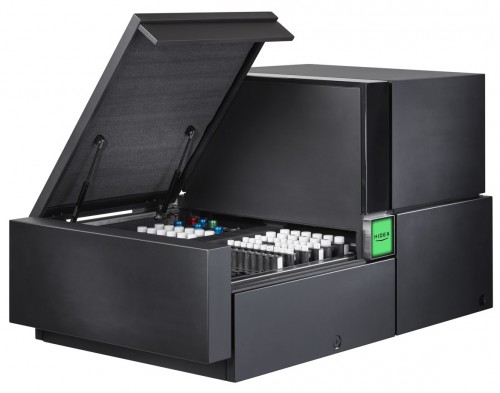Developing the next generation of Liquid Scintillation Counters for super low-level analysis
27/09/2023

After identifying a unique fault due to local environmental conditions at Washington State PHL, Hidex redesigned the existing 600 SL
The State of Washington in the US has legacy environmental contamination caused by nuclear energy, research, and material production. The Washington State Public Health Laboratories (PHL) is a public facility involved in monitoring sites such as the Hanford Nuclear Reservation, which was originally built as part of the Manhattan Project and used for plutonium production during the Cold War.
Among the things measured at PHL are trace amounts of Carbon-14 and Tritium in terrestrial surface water samples adjacent to sites like Hanford. The programs that PHL works for would like to distinguish between naturally occurring sources and those that have been introduced to the environment by anthropogenic radionuclides. Despite the environmental impact caused by high levels of nuclear activity, contemporary levels are now so low as to make these distinctions difficult, which is why a super low-level Liquid Scintillation Counter was required.
Following a rigorous tender process with a demanding specification, PHL procured the original Hidex 600 SL. However, following installation a unique fault occurred due to local conditions, which eventually lead to Hidex redesigning the counter to deliver the new 600 SLe. We spoke to Bud Taylor, Supervisor of PHL’s Environmental and Radiation Chemistry Group, and Chemist Danny Bell about the problem and how it was resolved.
“Hidex took the problem very seriously and said they would fix it, whatever it takes.”
Bud said, “The original issue arose because when we started running the 600 SL and turned on the chiller, the temperature started low but would gradually creep up. As it did, the variability in the background became wider. The background was still impressively low, but because we noticed the variability, it was clear something wasn’t right.
“The lab’s location presented a unique problem; this part of Washington has a lot of moisture in the air, and it was causing the chiller’s cooling fins to ice up, meaning it couldn’t be cooled effectively. When that happened, the 600 SL’s safety mechanism would kick in and the Peltier cooling would turn off so it wouldn’t cook itself. Our tender specified a chiller for sufficiently low background so it was a problem, but we didn’t understand what an engineering challenge it would be.
“Hidex took the problem very seriously and said they would fix it, whatever it takes. I was very surprised by what they were willing to do. They could have just built something big and boxy that made a lot of noise and plugged it in, but they said they couldn’t fix it without a substantial redesign of the counter, and that’s what they set out to do. I was just blown away by the efforts they were willing to go to.”
Introducing a cooling conveyor for stable sample loading
Based on PHL’s feedback, Hidex introduced a cooling conveyor to the new 600 SLe, which cooled samples 5°C or greater than below ambient room temperature in normal laboratory conditions. The conveyor’s lid was insulated to retain the target temperature for stable sample loading. Other new features included improved error handling with more descriptive error messages to facilitate troubleshooting and a sliding detection chamber hood that provided easier access to retrieve stuck vials.
Danny was appreciative of the new cooling conveyor, saying, “Every now and again, our counting lab will lose its temperature control if there’s a problem with the HVAC and the temperature can increase by 3°C or more, but the cooling chamber remains stable with no variation. The 600 SLe’s new design is completely solid.
“This was the first LSC I’ve been involved with setting up and I found it flexible enough to accommodate the low-level testing. The TDCR with three PMTs is fascinating from a theoretical standpoint and Hidex are very responsive to any questions we’ve had. They and LabLogic have made what could have been a daunting task much easier.”
“We had one problem, and Hidex really went the extra mile to resolve it.”
Bud added, “Even before the redesign, the original 600 SL allowed us to measure backgrounds for Tritium and Carbon-14 that met our tender specs. We have been very pleased with how responsive Hidex have been in addressing our issue. Now the counting chamber’s temperature has been resolved in the new model, we’re hoping for better stability and even lower detection limits.
“The servicing and experience we’ve received has been excellent. We had one problem, and Hidex really went the extra mile to resolve it and now the performance is even better than our original bid specification.”
Find out more
You can learn more about the Hidex 600 SLe by clicking the button below to speak to a product specialist directly.